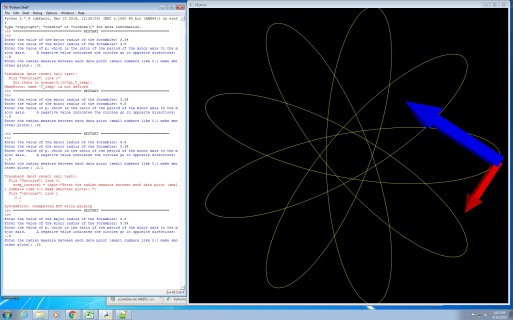At #BLC16 today, several teachers asked for resources to learn to code. I recently had the privilege of teaching a coding workshop to ten teachers at my school, and loved the power of interdisciplinary exploration of this craft. I learned so much teaching this tribe which included an art teacher, a Latin teacher, two physics teachers and three math teachers. I pulled together a list of resources for them, but overwhelmed them because it was too long. I decided to shorten the list for this post and just give my top ten.
TOP TEN RESOURCES FOR TEACHERS TO INCORPORATE CODING INTO THEIR COURSES:
- http://code.org: By far the best place to start, code.org offers tons of wonderful resources and lesson plans for doing an hour of code in your classroom and beyond. They have great videos that can be used for class, and lots of statistics that you can share with your school to defend your choice to teach kids to code. Additionally, they have links to many other resources used by teachers from different providers.
- https://scratch.mit.edu : Scratch is a fantastic first language with its visual drag and drop interface. Students can explore other people’s projects and then click “See Inside” to take a look at how the code was created and then “Remix” the project and add their own touches. There are a huge amount of teacher created resources that utilize Scratch for every subject in school. This drag and drop “block-based” language is great for all beginning coders.
- http://pencilcode.net/: An amazing site for creative teachers to find great lessons and resources for their classrooms. Students move from “block-based” to “text-based” languages in this easy to use, wonderfully creative web based editor. You can read about how Beaver Country Day uses pencilcode in all of their courses here: http://www.techtimes.com/articles/24689/20150105/this-is-how-a-innovative-school-integrated-coding-into-all-of-its-courses.htm
- https://processing.org/download/: A great starter text-based language that is used by artists, designers, and beyond to create amazing visual sketches. Look for tutorials from NYU’s amazing Dan Shiffman here. Find lesson plans for AP CSA from Lowell High School here.
- https://nclab.com/: A free program for students that easily moves them from turtle coding in blocks through 2D and 3D modeling in Python. This website also offers a free SCAD environment for designers.
- http://nicerc.org/: Cyber security, STEM and other computer science lessons, both on the computer and unplugged. Their teacher resources are amazing, and they have lessons that also use Parallax robots.
- http://appinventor.mit.edu/explore/: App Inventor allows students to create Android applications that can be downloaded and shared with friends. The big limitation here is that it is Android specific, but the drag and drop interface is very fun for students to use, and there are many teacher created lessons that can be found for this package.
- https://academy.oracle.com/en/membership-join-oracle-academy.html: Oracle offers free training and resources for teachers and students. All of their resources are free, and they have ready to go curriculum for you to use with your students for computer science.
- http://cs50.wiki/This+is+CS50+AP: Harvard’s CS50 Introduction to Programming course has now been mapped to the AP Computer Science Principles and is being marketed as CS50 AP. The course is incredibly challenging, but an amazing free resource for teachers who want to learn how to code more deeply. This may not be your first stop when starting to code, but if you get hooked, this will give you the tools to take it as far as you would like.
- https://countsp.trinket.io/ap-physics-with-python#/welcome/introduction: Specifically for AP Physics teachers, this set of Python tutorials inspired the physics teacher at my school, and he found it very helpful for designing the sketch below that modeled the path of a roller coaster at Six Flags New England.
For my full overwhelming list of resources, look here: https://docs.google.com/document/d/1nhgJFbW2Mz5Kh68tNYos5N9-xOBkfG_KZBi3ALsmMO8/pub
I can’t help but add in a few extras for the English and History teachers out there that want to do this:
HUMANITIES and CODING RESOURCES:
Article about coding in English and history class: http://www.slate.com/articles/technology/future_tense/2015/04/building_coding_into_art_english_and_history_classes.html
Pencilcode activity: http://activity.pencilcode.net/home/worksheet/humanities.html
Language learning chain of studios in Scratch: https://scratch.mit.edu/projects/98463980/
One teachers’ Scratch concept map of coding in English class: https://scratch.mit.edu/projects/97659653/
English class studio of projects created in Scratch: https://scratch.mit.edu/studios/1697459/
And finally, a shout out to Jackie Corricelli’s “Links to Learn” page for students: http://blog.whps.org/corricelli/links-to-learn/

Pingback: July 29 2016 edition | Level Up Report